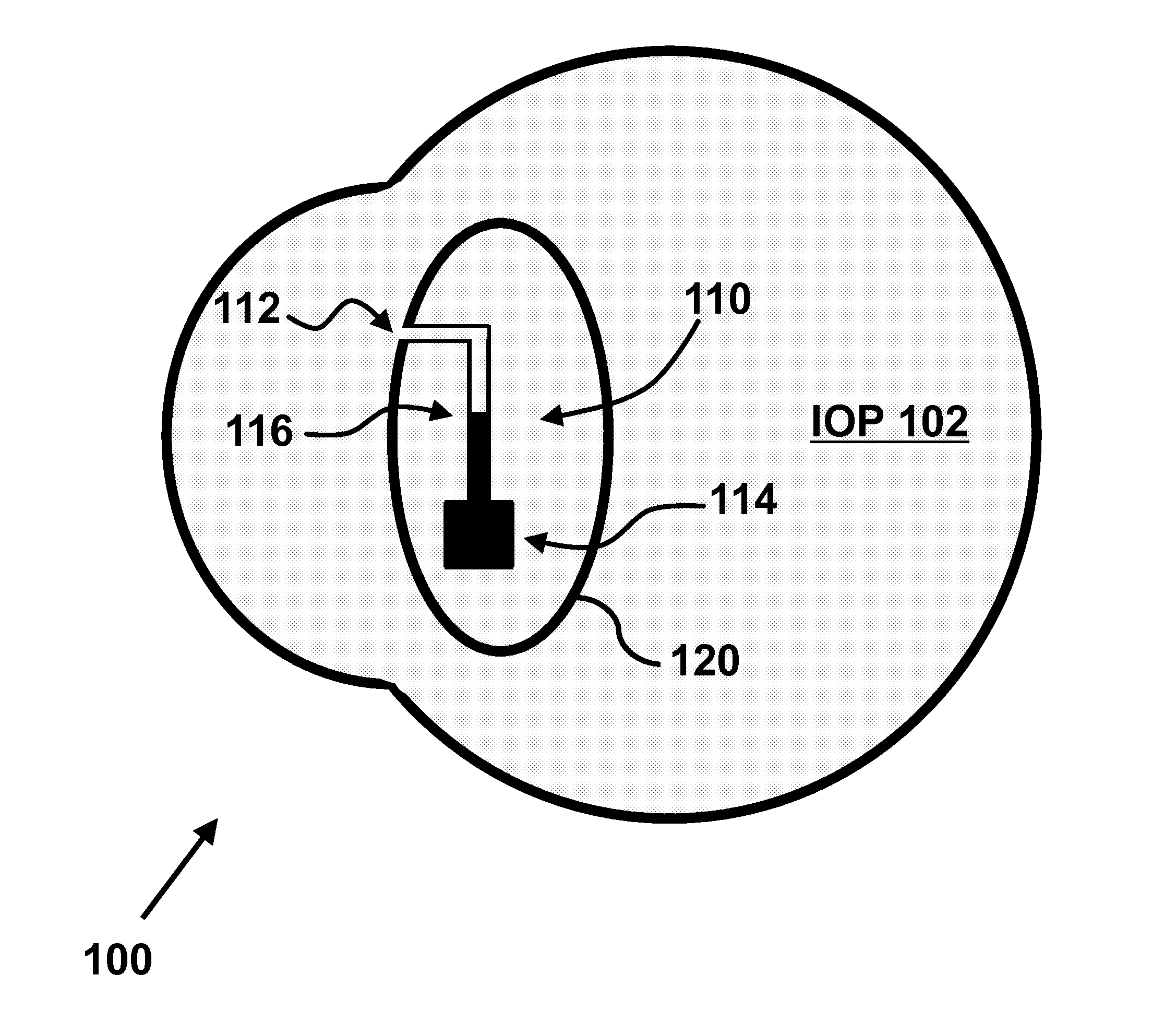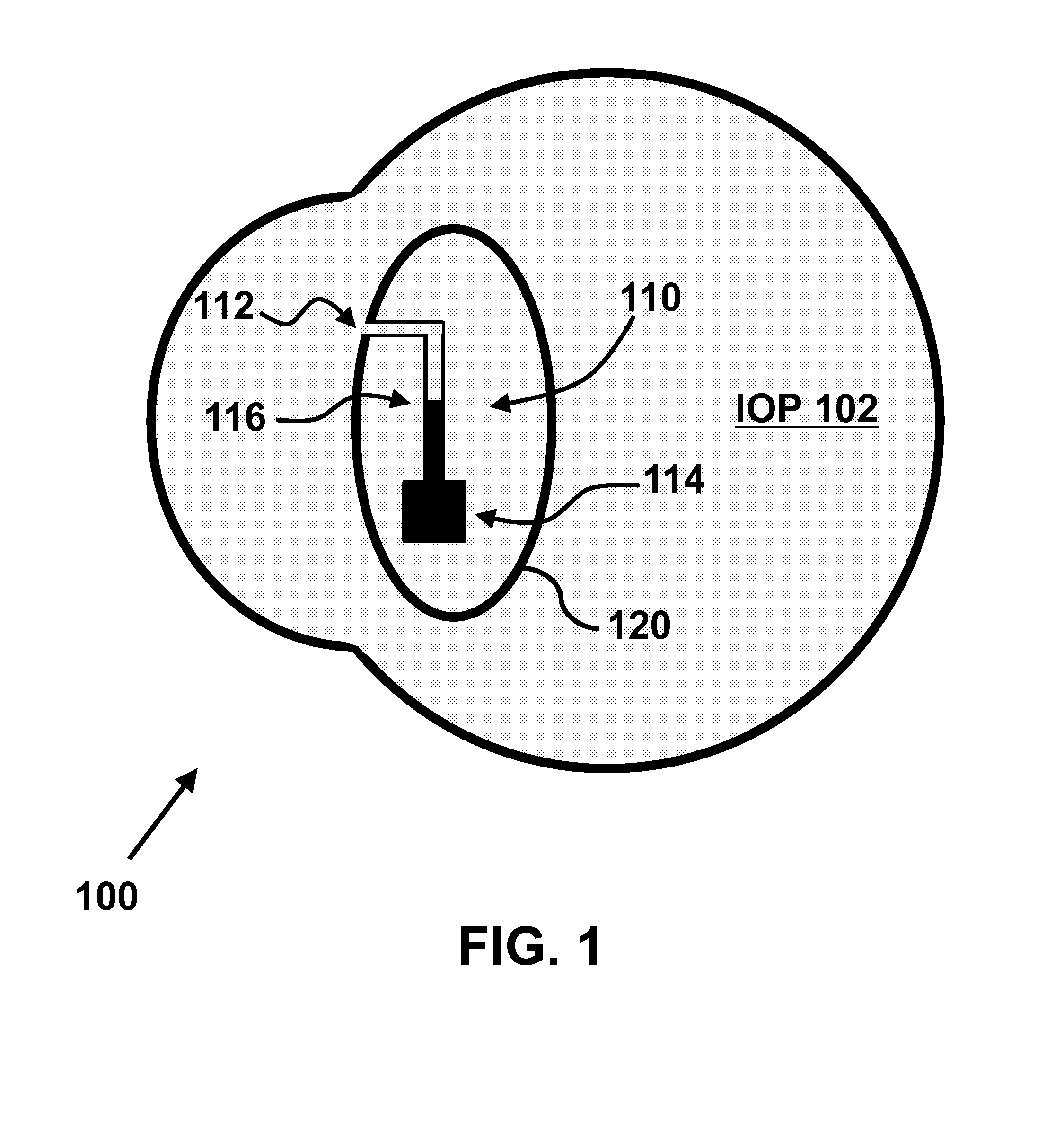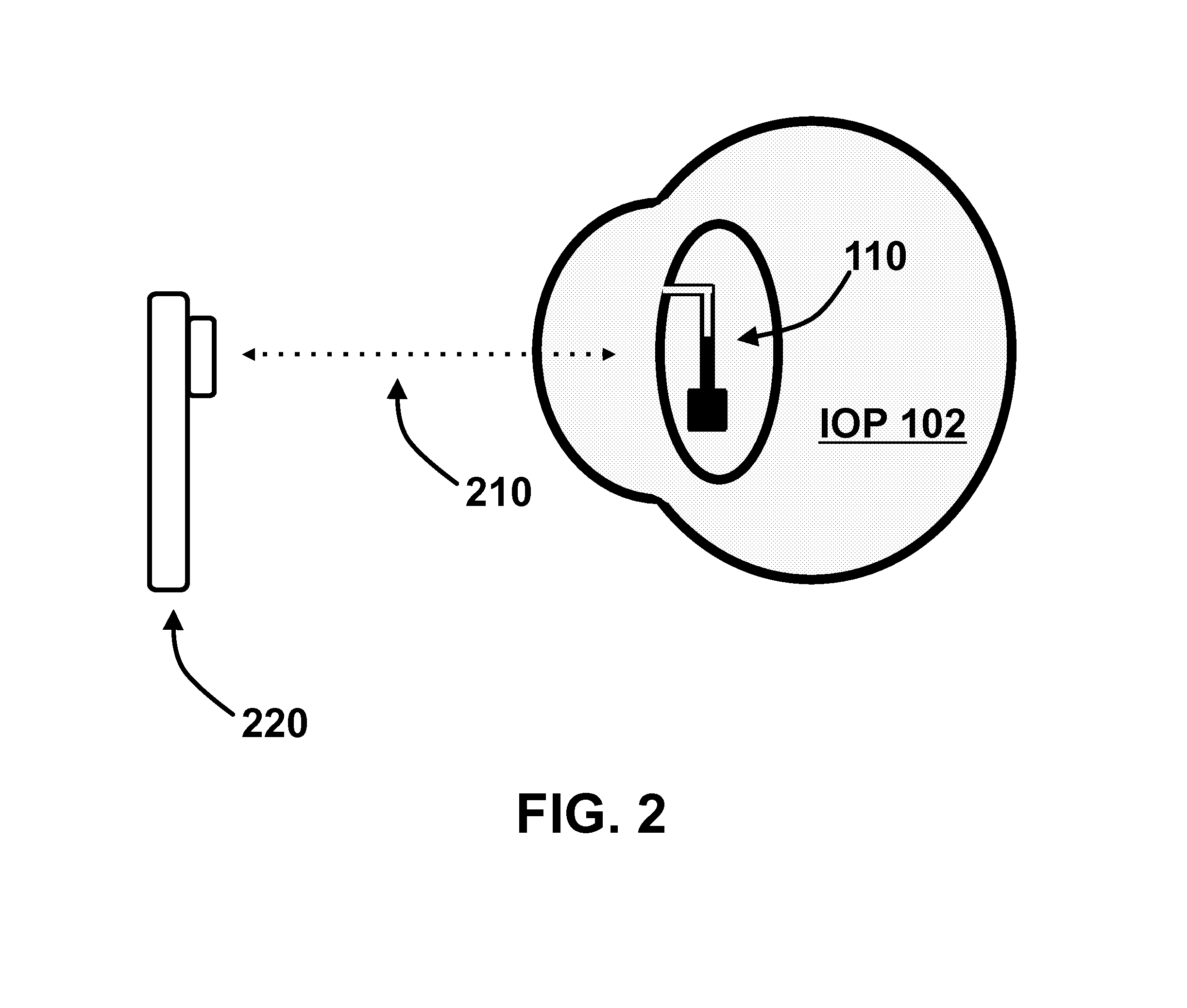Implantable Micro-Fluidic Device for Monitoring of Intra-Ocular Pressure
a microfluidic device and intra-ocular pressure technology, applied in the field of microfluidic intra-ocular pressure monitoring devices, can solve the problems of inability to perform the procedure by the patient, their relatives, non-professional personnel, etc., and achieve the effect of more frequent measurements and/or home monitoring, and better patient care and treatmen
- Summary
- Abstract
- Description
- Claims
- Application Information
AI Technical Summary
Benefits of technology
Problems solved by technology
Method used
Image
Examples
first embodiment
[0018]In a first embodiment, the IOP sensor has a microfluidic channel 112 open to an aqueous intraocular liquid on one end and connected to a gas chamber or reservoir 114 on the other end (gas is indicated as black for illustration purposes). Capillary forces between the inner wall of the channel and the intraocular liquid and a positive intraocular pressure hold the liquid within at least part of the channel. Increased intraocular pressure 102 would drive the liquid further into the micro-channel 112, compressing the gas inside the reservoir until gas pressure is in equilibrium with liquid pressure as indicated by (gas-fluid) interface 116. Increased intraocular pressure causes the (gas-fluid) interface 116 to shift toward the channel's dead end (the gas reservoir), while decreasing the IOP causes a shift toward the channel opening.
[0019]Intra-Ocular Pressure readout can be accomplished optically by passing light 210 with wavelength in the range of transparency to the ocular optic...
second embodiment
[0024]The intraocular pressure could be transmitted to the intra-channel fluid through one or more openings in the channel or through a thin flexible membrane with a surface area in the range of 100 μm square to 100 mm square as described with respect to the sensor.
[0025]In a second embodiment shown in FIG. 9, the IOP sensor 910 has a flexible thin membrane 920 covering a fluid filled reservoir 930, which is connected to a small cross section channel 940 with a dead end. Changes in the IOP cause shifts of fluid volume from the reservoir to the channels and therefore, a movement of the liquid-air (or other gasses) interface 950. Adding color to the fluid in the example could further enhance the visibility of the fluid column (not shown). Alternatively, two fluids with two different colors can be used.
[0026]A temperature sensor can be incorporated in the sensor and can be used for pressure correction. Temperature sensor could be incorporated near the IOP sensor or in a separate device...
PUM
 Login to View More
Login to View More Abstract
Description
Claims
Application Information
 Login to View More
Login to View More - R&D
- Intellectual Property
- Life Sciences
- Materials
- Tech Scout
- Unparalleled Data Quality
- Higher Quality Content
- 60% Fewer Hallucinations
Browse by: Latest US Patents, China's latest patents, Technical Efficacy Thesaurus, Application Domain, Technology Topic, Popular Technical Reports.
© 2025 PatSnap. All rights reserved.Legal|Privacy policy|Modern Slavery Act Transparency Statement|Sitemap|About US| Contact US: help@patsnap.com



